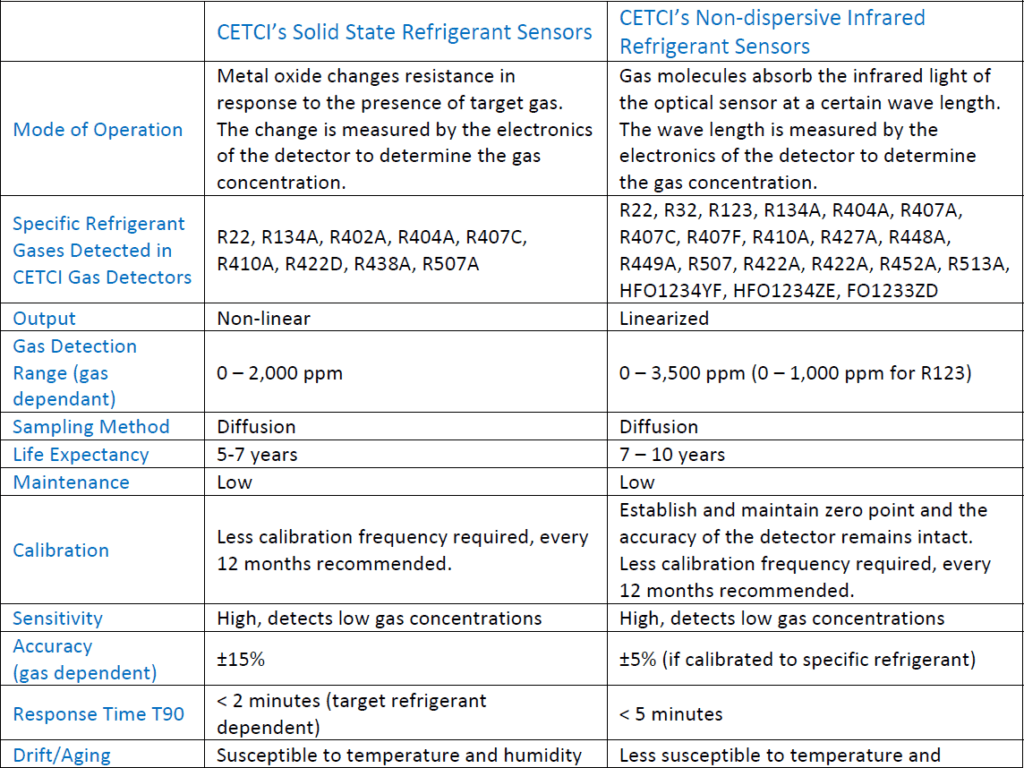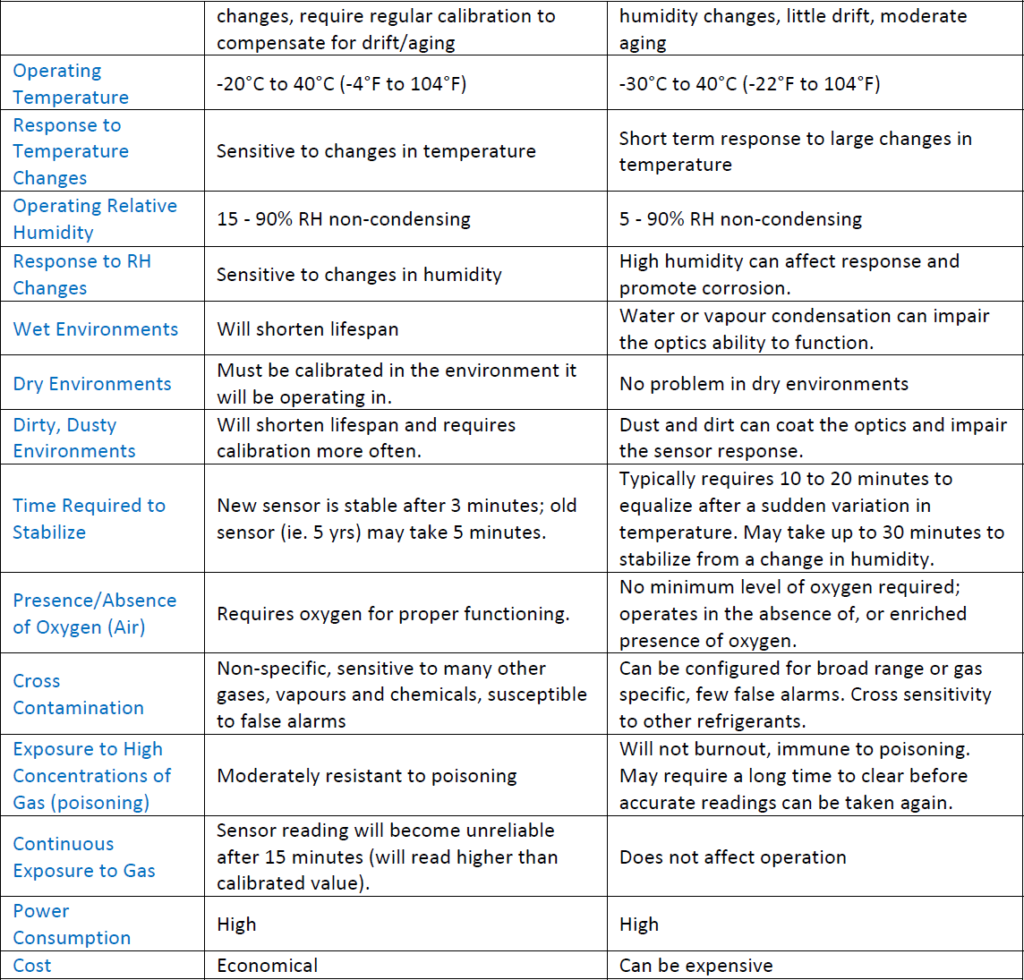Solid State vs Non-dispersive Infrared Refrigerant Gas Sensors
เปรียบเทียบเซ็นเซอร์ตรวจจับก๊าซทำความเย็น: Solid State vs. Non-Dispersive Infrared (NDIR)
การเลือก เซ็นเซอร์ตรวจจับก๊าซทำความเย็น ที่เหมาะสมเป็นสิ่งสำคัญเพื่อให้มั่นใจถึง ความแม่นยำ และ ประสิทธิภาพ ในการตรวจจับรอยรั่วของสารทำความเย็นในสภาพแวดล้อมที่แตกต่างกัน โดยทั่วไป เซ็นเซอร์ที่ใช้มีสองประเภทหลัก ได้แก่ เซ็นเซอร์แบบ Solid State และเซ็นเซอร์แบบอินฟราเรด (NDIR) ซึ่งแต่ละประเภทมีข้อดีและข้อจำกัดที่แตกต่างกัน
Solid State vs Non-dispersive Infrared Refrigerant Gas Sensors
For many refrigeration applications, using solid state sensors will provide an economical and reliable gas detection solution. Solid state sensors are reliable if used in a clean area with very little temperature and humidity changes. Solid State refrigerant sensors should not be used where there are other chemicals or gases present (other than refrigerants), such as alcohol-based cleaners, fumes from running engines, fuel storage containers, etc.
Using infrared sensor technology will ensure the highest degree of sensor accuracy if monitoring an area where there are other contamination gases or multiple refrigerants in the same area. Infrared refrigerant sensors should not be used in locations that have corrosive chemicals such as chlorine, ammonia and other oxidizers that are present, especially if there is a higher humidity level.
Comparison of CETCI’s Solid State Refrigerant Sensors and Infrared Refrigerant Sensors


Applications for Refrigerant Sensors: Recommendation by Sensor Type



